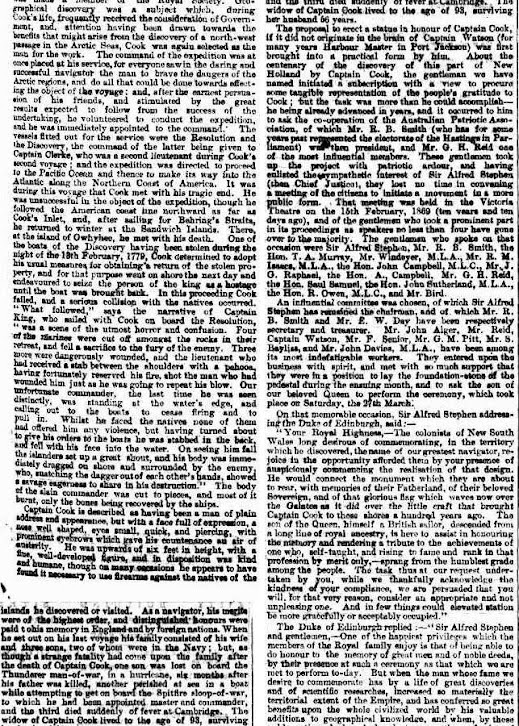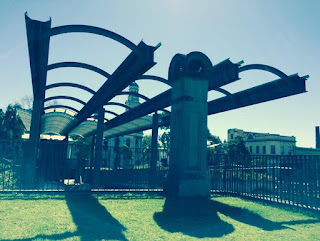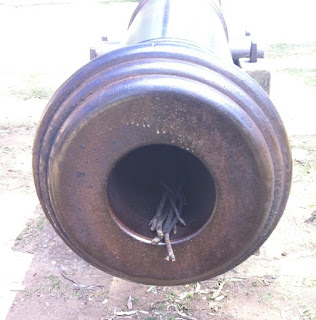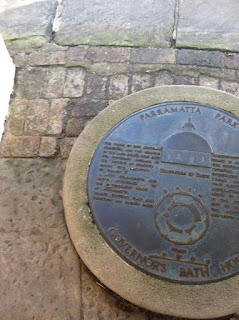Search This Blog
Sunday, October 24, 2021
"Clydebank" Formerly Bligh House - 43 Lower Fort Street - The Rocks - NSW
"Clydebank" - Formerly Known As Bligh House - 43 Lower Fort Street - The Rocks
Captain Cook Statue - Hyde Park South - Unveiled 25th February 1879 - Sydney - New South Wales
The Captain Cook Statue - Hyde Park - Sydney - NSW
The Captain Cook Statue Is In The South Of Hyde Park
The Sculpture Stands On A Moruya Granite Pedestool.
This Work Was Commissioned On The 26th September 1874 & Was unveiled To The Public On The 25th February 1879
It Was Made By Thomas Woolner (1825 - 1892). He Was Born In Hadleigh, Suffolk, & Studied At The Royal Academy. He Travelled To Australia in 1852, & Went On To Have Limited Success On The Voctorian Goldfields.
The Day Of The Sculpture's Unveilling Was Declared A Public Holiday In Honour Of Cook & The Monument. It Was Estimated That 12,000 Joined The Procession To Hyde Park & 60,000 People Attended.
Saturday, October 9, 2021
Paddington Reservoir - Paddington - Sydney Water Suppply - New South Wales
Paddington Reservoir - Oxford Street - Paddington - New South Wales.
The Paddington Reservoir, also known as the Paddington Reservoir Gardens, is a heritage-listed site located in Paddington, Sydney, New South Wales, Australia. Here's some information about the Paddington Reservoir:
1. History: The Paddington Reservoir was originally constructed in the 1860s as an underground water reservoir to supply water to the growing population of Sydney. It was part of the Sydney's water supply infrastructure, designed by engineer Edward Bell.
2. Architectural Design: The reservoir was designed in a Romanesque Revival architectural style, which was popular during the Victorian era. The structure features a blend of brickwork and iron columns, with arches and vaulted ceilings.
3. Function: The reservoir was in operation until 1899 when it was decommissioned. It then went through several stages of use, including storage, workshops, and a service station. In the 20th century, the site fell into disrepair and was eventually abandoned.
4. Transformation into Gardens: In the 1990s, a redevelopment project aimed at transforming the reservoir into a public space was initiated. The site was restored and converted into the Paddington Reservoir Gardens, opening to the public in 2008.
5. Features: The Paddington Reservoir Gardens blend the historic elements of the underground reservoir with modern design. The site incorporates sunken gardens, walkways, seating areas, and reflective pools, creating a serene and contemplative atmosphere.
6. Heritage Significance: The Paddington Reservoir is listed on the New South Wales State Heritage Register and the Australian National Heritage List. It is recognized for its historical and architectural importance, as well as its contribution to the local community and the city's heritage.
7. Events and Activities: The Paddington Reservoir Gardens are a popular venue for various cultural events, art installations, and community activities. It also serves as a tranquil oasis for locals and visitors seeking respite from the bustling city.
The Paddington Reservoir stands as a testament to the historical water infrastructure of Sydney and has been successfully repurposed as a unique urban park. Its blend of historic and contemporary design elements, along with its peaceful ambiance, makes it a notable attraction in Paddington.
























































































































































